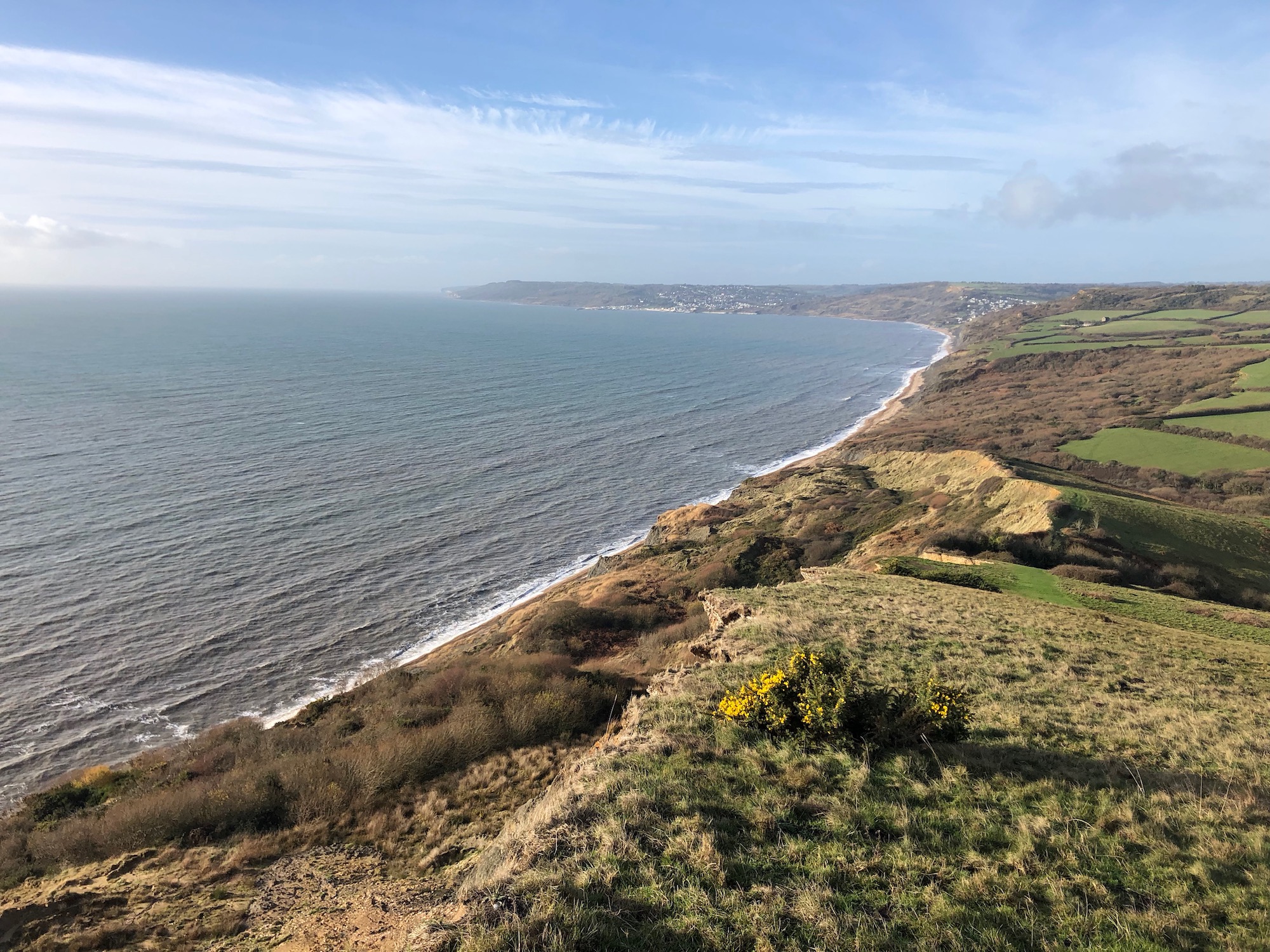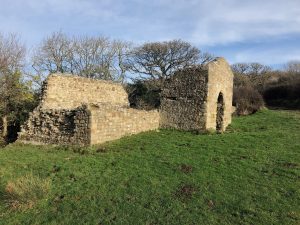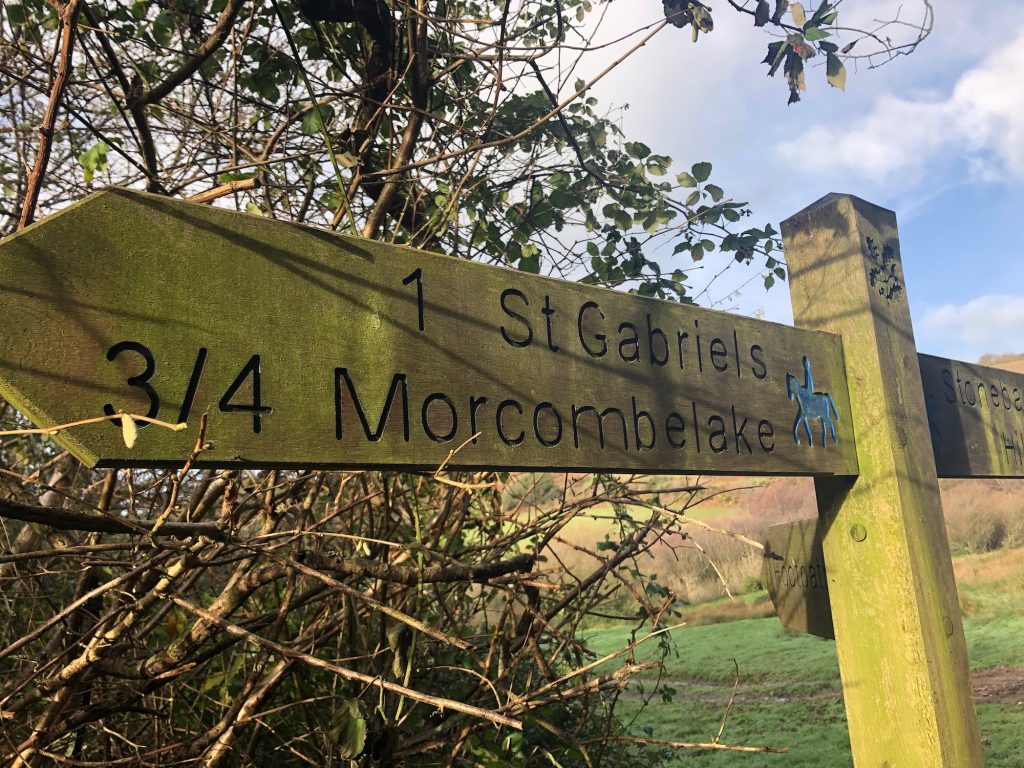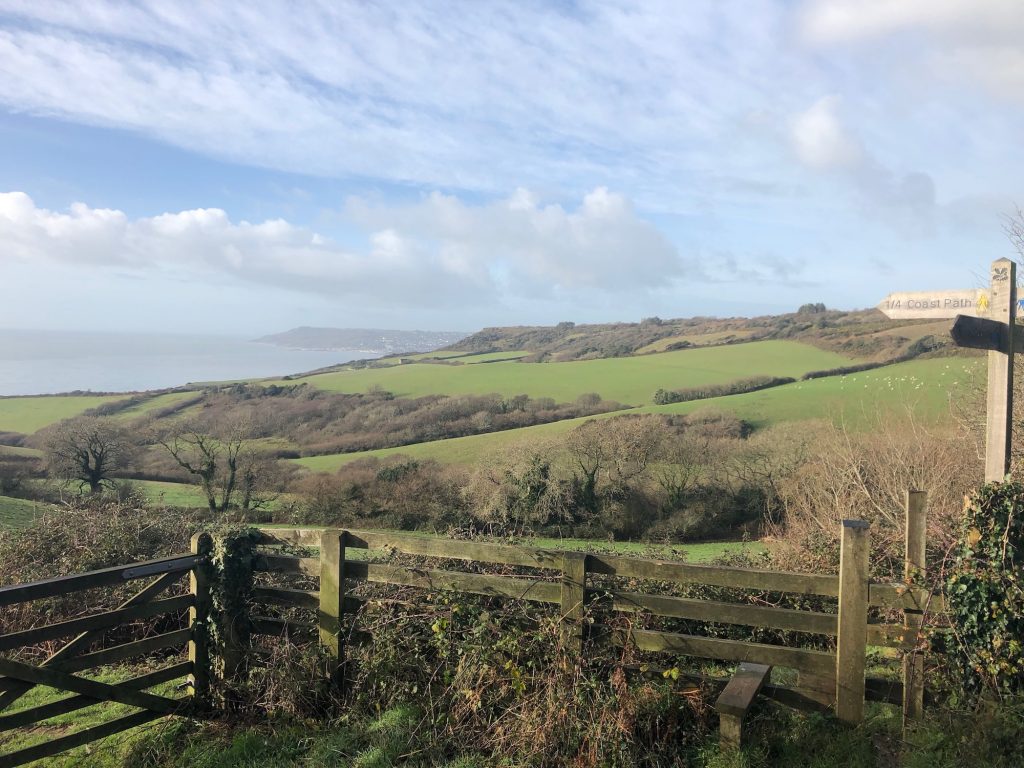A walk through the woods on Langdon Hill, visiting the medieval hamlet of Stanton St Gabriel, now a handful of refurbished cottages and a ruined thirteenth century chapel.
The landscape spread out around Langdon Hill is criss-crossed with ancient trackways as well as fields and hedgerows from medieval times, and the traditional farming methods used on National Trust land encourage a profusion of wildlife.
Children will love the freedom of the open ground and the old lanes, as well as the forest paths and the ancient ruins.
Route Description
From the car park in Seatown, take the road northwards, towards Chideock, and turn left onto the South West Coast Path, following it across the field, through the copse, and steeply uphill through the open heathland on the seaward side of the next field.
Emerging from the scrub onto open ground, fork left and carry on along the Coast Path as it crosses to the left-hand corner at the top of this open ground and starts climbing towards Golden Cap.

However, if you want to avoid the steep ascent and descent going over Golden Cap, instead of taking this left-hand path you can fork right here, to walk along the hedge, turning left onto the lane beyond at 8 and then taking the path around Langdon Hill at 7 for a shorter stroll.
If you are opting for the longer walk and carrying on along the Coast Path towards the top of Golden Cap, the path goes through the gap in the hedge and curves around the back of the hill before it climbs to the summit, and another path leads back to Langdon Hill. Again stay with the Coast Path as it summits and then zigzags down towards the valley.

When the path forks at the end of this field, take the right-hand path and follow it downhill towards St Gabriel’s Wood.
The ruins in front of you are all that remains of St Gabriel’s Chapel, first recorded in 1240.

The walk continues up the track to the right from here; but take the time to stroll down to Stanton St Gabriel, just a stone’s throw to your left, where the handful of cottages, refurbished as holiday cottages by the National Trust, are all that now remains of the medieval hamlet.
There has been a settlement here since Saxon times, although the hamlet was not formally recorded until 1086.
At that time the surrounding landscape would have been divided into a number of smallholdings, and today the area is criss-crossed with the ancient pathways, hedges and fields from those times, as well as from later centuries.
The main house of the settlement is St Gabriel’s House, thought to have been the mediaeval manor house of Stanton. Although much of the brickwork is eighteenth century, the stone walling is medieval.
In 1650 there were 23 families here, who asked for St Gabriel’s Chapel to be made a parish church, although nobody knows whether this happened. Certainly, by the end of the eighteenth century the chapel had fallen into disrepair, following the decline of the hamlet’s population, as most of the agricultural workers left to go to Bridport and work in the rope-making industry.
The Anchor Inn in Seatown is said to have been the stamping ground of a band of nineteenth century smugglers known as “The Chideock Gang”.
From the hamlet walk back up the track past the chapel and carry on along it, turning right again just after it goes through into the next field, and from here walk uphill along the hedge, turning left at the top to follow the path to the gate at the far end.
 On the Golden Cap Estate, as in its properties elsewhere, the National Trust has encouraged the use of traditional farming methods, and this helps wildlife to flourish. In the tiny streams there are amphibians like frogs, toads and newts, while on land their reptile cousins include adders and the common lizard. In the air above the streams you may catch a glimpse of a dragonfly, while the many species of wildflowers like primroses, bluebells and orchids attract butterflies and other insects. Birds in the area include the yellowhammers which bob and dip between the thorn bushes, as well as buzzards hunting overhead, and massive ravens with glossy black plumage.
On the Golden Cap Estate, as in its properties elsewhere, the National Trust has encouraged the use of traditional farming methods, and this helps wildlife to flourish. In the tiny streams there are amphibians like frogs, toads and newts, while on land their reptile cousins include adders and the common lizard. In the air above the streams you may catch a glimpse of a dragonfly, while the many species of wildflowers like primroses, bluebells and orchids attract butterflies and other insects. Birds in the area include the yellowhammers which bob and dip between the thorn bushes, as well as buzzards hunting overhead, and massive ravens with glossy black plumage.
Going through the gate into the next field, carry straight on ahead to the gate at the top, where the path skirts the southern end of the woodland on Langdon Hill.
 Reaching the gate, you can either turn left before it, onto the path around the outside perimeter of the wood, or you can go through the gate and turn left on the path into the trees, turning left again when you come to the track leading around the western side of the wood. If you choose the path outside the woodland, follow it all the way around the hill, ignoring the path downhill to the left en route, and join the track as it begins to curve around the far end of the wood.
Reaching the gate, you can either turn left before it, onto the path around the outside perimeter of the wood, or you can go through the gate and turn left on the path into the trees, turning left again when you come to the track leading around the western side of the wood. If you choose the path outside the woodland, follow it all the way around the hill, ignoring the path downhill to the left en route, and join the track as it begins to curve around the far end of the wood.
Stay on this track right the way around the hill, ignoring the turning to the left through the car park, and continue to the southern end of the wood.
When you come to the path on your left as the track turns westwards again, turn left onto it and follow it down to where it meets the green lane beyond. Carry on along this lane (Pettycrate Lane), ignoring the path to the right soon afterwards.
After a while, Langdon Lane joins from the left. Go on past this, until the next fork, a little way beyond. Leave Pettycrate Lane here as it heads towards Chideock, and bear right to follow this lane instead as it starts to drop downhill towards Seatown.
Reaching Sea Hill Lane, just beyond Seahill House, turn right and go back down towards Seatown, to return to the car park on your left.
